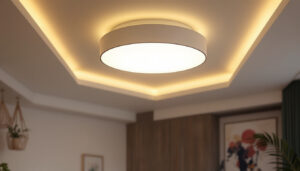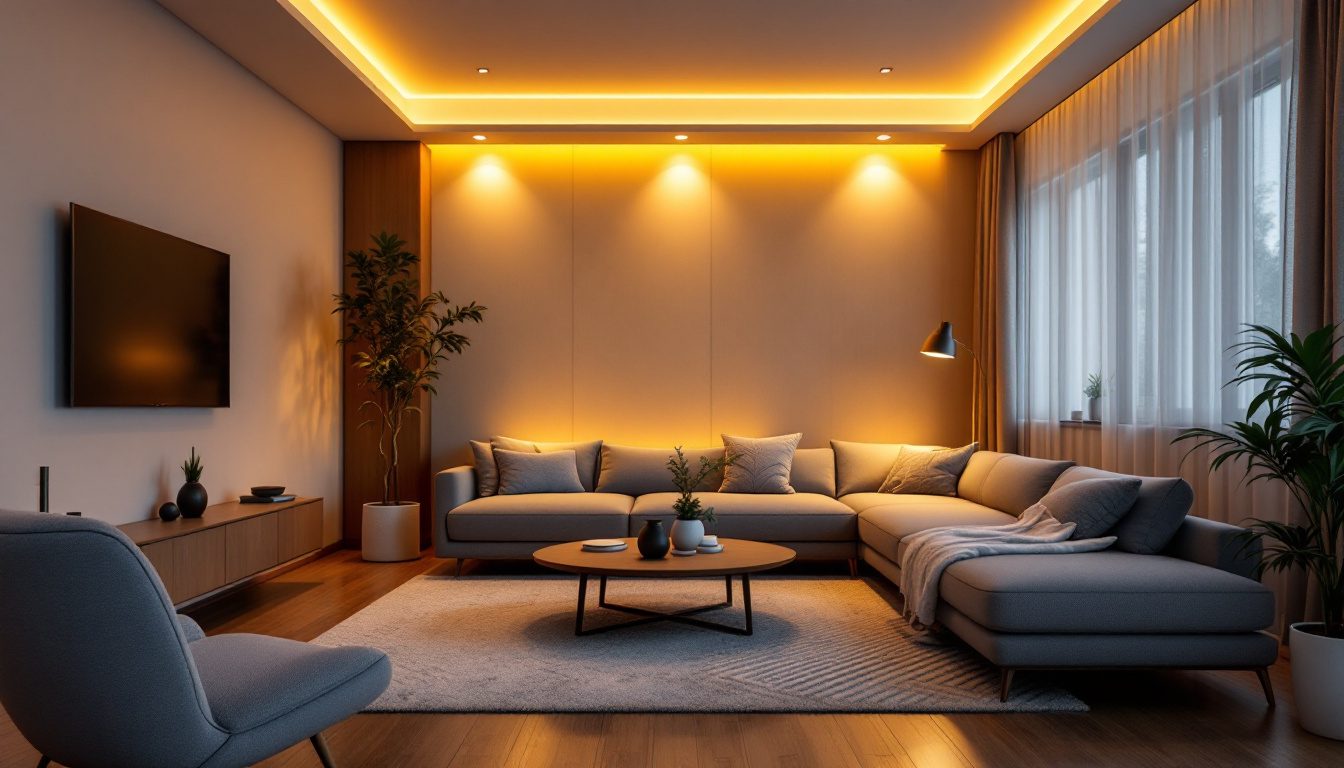
In the realm of lighting design, island lamps have emerged as a popular choice for both residential and commercial spaces. These fixtures not only provide essential illumination but also serve as key aesthetic elements that can enhance the overall ambiance of a room. For lighting contractors, understanding the nuances of island lamps is crucial for delivering exceptional results to clients. This article explores proven methods and best practices for working with island lamps, ensuring that lighting professionals can maximize their potential.
Before diving into the methods for installation and design, it’s important to grasp what island lamps are and how they differ from other lighting fixtures. Typically, island lamps are suspended fixtures that hang above kitchen islands, dining tables, or bar areas. They come in various styles, sizes, and materials, allowing for versatility in design. These lamps not only provide essential illumination for tasks like cooking and dining but also serve as focal points that can enhance the overall aesthetic of the space.
In addition to their functional benefits, island lamps can also contribute to the ambiance of a room. The right lighting can create a warm, inviting atmosphere, making gatherings with family and friends more enjoyable. Moreover, island lamps can be used to highlight specific areas of interest, such as artwork or decorative elements on the island, adding depth and character to the interior design.
Island lamps can be categorized into several types, each serving different aesthetic and functional purposes. pendant lights are among the most common, often featuring multiple bulbs and unique designs that can complement various interior styles. chandeliers, on the other hand, provide a more dramatic flair, making them ideal for larger spaces or more formal settings. These grand fixtures can serve as statement pieces, drawing the eye upward and adding a touch of elegance to the room.
Another option is linear lighting, which consists of long, narrow fixtures that can be mounted directly above an island. This type of lamp is particularly effective in modern and minimalist designs, offering a sleek look while providing ample light. Additionally, some linear fixtures come with adjustable brightness settings, allowing homeowners to customize the lighting based on the time of day or the mood they wish to create. The versatility of these fixtures makes them a popular choice for both residential and commercial spaces.
The materials and finishes of island lamps play a significant role in their overall appearance and functionality. Common materials include metal, glass, and wood, each contributing to different design aesthetics. For instance, metal fixtures often lend an industrial vibe, while glass can create a more elegant and airy feel. Wood elements can introduce warmth and a natural touch, making them ideal for rustic or farmhouse-style kitchens.
Finishes such as brushed nickel, matte black, or antique bronze can further enhance the style of the lamp. Lighting contractors should consider the existing decor of the space when selecting materials and finishes to ensure a cohesive look. Moreover, incorporating mixed materials can add an interesting layer of texture and complexity to the design. For example, a lamp that combines metal and glass can achieve a contemporary look while maintaining a sense of warmth and approachability. This thoughtful selection process not only elevates the visual appeal but also ensures that the lighting complements the overall design narrative of the home.
Designing with island lamps requires a thoughtful approach to ensure that both functionality and aesthetics are achieved. Here are some key considerations for lighting contractors to keep in mind.
One of the most critical aspects of installing island lamps is determining the correct height and placement. A common guideline is to hang pendant lights approximately 28 to 34 inches above the surface of the island or table. This height allows for adequate illumination while ensuring that the fixture does not obstruct views or create an awkward atmosphere.
For larger islands, multiple fixtures may be necessary to provide even lighting. In such cases, spacing the lamps evenly and maintaining consistent height can help achieve a balanced look. Additionally, considering the scale of the lamp in relation to the island is essential; oversized fixtures can overwhelm a small space, while too-small lamps may not provide sufficient light.
Effective lighting design often involves layering different types of light sources to create a well-rounded atmosphere. Island lamps can serve as the primary source of illumination, but incorporating ambient and task lighting can enhance the overall effect. For example, under-cabinet lighting can provide additional task lighting for food preparation, while wall sconces can add ambient light to the surrounding area.
By layering light, contractors can create a dynamic environment that is both functional and visually appealing. This approach also allows for flexibility in adjusting the lighting based on the time of day or the specific needs of the space.
Once the design considerations have been addressed, the next step involves the installation of the island lamps. Proper installation is crucial for ensuring safety and functionality. Here are some proven techniques for lighting contractors.
Before installing any lighting fixture, it is essential to assess the existing electrical setup. Contractors should ensure that the electrical box is rated for the weight of the lamp and that the wiring is adequate to support the fixture’s power requirements. This may involve upgrading the electrical circuit or adding additional support for heavier fixtures.
When running new wiring, it’s important to follow local building codes and regulations. This not only ensures safety but also protects the contractor from potential liability issues. Using a voltage tester can help confirm that the power is off before beginning any work.
Securing the island lamp properly is vital for both safety and aesthetics. For pendant lights, using a sturdy mounting bracket is essential to prevent sagging or falling. For heavier fixtures like chandeliers, additional support may be required. This can involve installing a ceiling brace that can handle the weight of the fixture.
After securing the fixture, it’s important to check for stability and make any necessary adjustments. A well-secured lamp not only enhances safety but also contributes to the overall appearance of the installation.
Once the island lamps are installed, maintenance becomes an important consideration for ensuring longevity and performance. Educating clients on proper care can enhance their satisfaction and reduce the likelihood of issues arising in the future.
Regular cleaning of island lamps is essential to maintain their appearance and functionality. Dust and grime can accumulate on the surface, diminishing the quality of light and the overall aesthetic. Depending on the materials used, cleaning methods may vary. For glass fixtures, a gentle glass cleaner can help restore clarity, while metal surfaces may require a soft cloth and mild soap.
Contractors should advise clients to establish a cleaning routine, particularly in kitchens where grease and cooking residue can build up more quickly. Regular maintenance not only keeps the lamps looking great but also ensures optimal performance.
As with any lighting fixture, bulbs will eventually need to be replaced. Educating clients on the type of bulbs used in their island lamps is crucial. Whether they are incandescent, LED, or fluorescent, understanding the lifespan and energy efficiency of each type can help clients make informed decisions about replacements.
In addition, contractors should provide guidance on how to safely replace bulbs, particularly for fixtures that are hung at a height. Offering tips on using step stools or ladders safely can prevent accidents and ensure that clients feel comfortable maintaining their lighting fixtures.
Staying updated on current design trends can give lighting contractors a competitive edge. As styles evolve, so do the preferences of clients seeking island lamps. Here are some notable trends to consider.
Minimalism continues to dominate the design landscape, with clean lines and simple forms becoming increasingly popular. Island lamps that embody minimalist principles often feature sleek silhouettes and neutral color palettes, allowing them to blend seamlessly into various interiors.
Contractors should consider offering clients options that reflect this trend, focusing on fixtures that provide functionality without overwhelming the space. This approach not only meets current design preferences but also appeals to clients seeking timeless solutions.
The rise of smart home technology has also influenced the lighting industry. Many clients are now interested in incorporating smart lighting solutions into their homes, allowing for greater control over their lighting environments. Island lamps equipped with smart bulbs or integrated smart technology can offer features such as dimming, color changing, and remote control.
Lighting contractors should familiarize themselves with various smart lighting options to provide clients with innovative solutions that enhance their living spaces. This knowledge can set contractors apart as forward-thinking professionals in the industry.
Island lamps are a versatile and essential component of modern lighting design. For lighting contractors, mastering the methods of installation, design, and maintenance is crucial for delivering exceptional service to clients. By understanding the nuances of island lamps, including their types, design considerations, and installation techniques, contractors can ensure that they meet the diverse needs of their clientele.
As trends continue to evolve, staying informed about the latest developments in lighting design will further enhance a contractor’s ability to provide innovative solutions. Ultimately, the successful integration of island lamps into various spaces not only elevates the aesthetic appeal but also enriches the overall experience for those who inhabit those spaces.
Ready to take your lighting projects to the next level? At LumenWholesale, we provide lighting contractors like you with the highest quality island lamps and spec-grade lighting products at unbeatable wholesale prices. Say goodbye to local distributor markups and hello to a vast selection of reliable, high-performance lighting that meets the highest industry standards. Plus, with free shipping on bulk orders, you can stock up on premium lighting solutions without worrying about hidden fees or compromises. Elevate your lighting designs today and give your clients the exceptional service they deserve. Discover the perfect blend of quality, affordability, and convenience at LumenWholesale – Wholesale Lighting at the Best Value.

Discover essential insights and expert tips for lighting contractors on mastering porch light installations.

Discover essential insights and expert tips on outdoor lighting that every lighting contractor should know.

Discover essential insights for lighting contractors on high bay lighting solutions.

Discover the ultimate guide to LED replacement can lights, covering everything from installation tips to energy-saving benefits.
Get notified when NEW deals are released.
Optimize your budget with wholesale discounts.
Only top-quality, specification-grade lighting products.
No additional costs at checkout - what you see is what you pay.
We understand the unique needs of contractors.